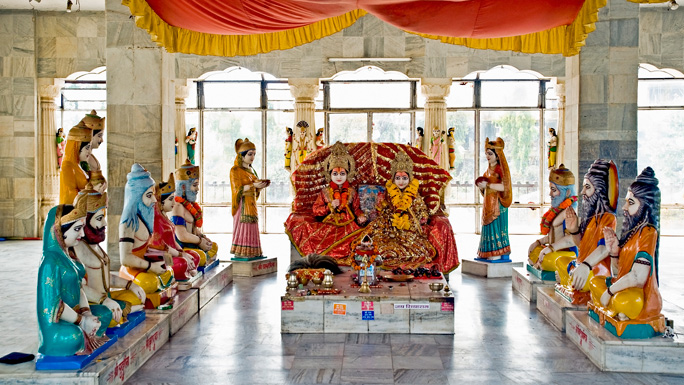Ramayana Trail – Part 2 – Nepali Versions of Ramayana
We all are following the news about Nepal and Lord Ram. The Prime Minister of Nepal seems to claim the ownership over Lord Ram and even call Ram as a Nepali, just because Janakpur, where Sita belongs to is in their country. Despite his tall claims, Lord Ram has his origins in India. But why this fascination for Ram by Nepalese?
Ramayana is associated with most of the Asian countries, especially the South Asian nations. Nepal being a Hindu nation has definite and strong bond with Lord Ram. In fact they have their own Nepali versions of Ramayana and in this part we look at different Nepali versions of the epic and what it has got in store for devotees.
The Khas language (later called “Nepali”) version of Bhanubhaktako Ramayan by Bhanubhakta Acharya marked the first epic written in the language. Another version is called Siddhi Ramayan was written by Mahakavi Siddhidas Mahaju Amatya during Nepal Bhasa renaissance era.
Bhanubhaktako Ramayan
Adikavi Bhanubhakta Acharya was born in 1871 in Gandaki district of Nepal. He was the son of Dhananjaya Acharya and Dharmawati Acharya. His grandfather Srikrishna Acharya brought him up and educated him. As Shrikrishna wanted to spend his last days in Kashi, he went there with young Bhanubhakta.

During his two-year stay there, Bhanubhakta gained knowledge from great scholars. It was their devotion to Lord Rama that inspired Bhanubhakta to translated Ramayana into the Nepali language. There is another well-known incident about how Bhanubhakta was inspired by a grasscutter, who wanted to build a well for his village with his hard-earned money. He told Bhanubhakta he wanted to earn dharma and fame with this good deed.
Inspired to be remembered for his deed, Bhanubhakta began writing poems. He started translating the Ramayana in 1905. However, during this time he was imprisoned in the Kumarichowk jail because of some disorder in his father’s work. And Bhanubhakta completed his Ramayana during his prison term.
Bhanubhakta was a first Nepali poet who translated the great epic Ramayana from Sanskrit to Nepali. His writing was significant in the then Nepalese society where common people did not have access to this great epic. Only people belonging to Brahmin families were educated and could read and write Sanskrit. His translation of Ramayana in Nepali language was a milestone in that country’s literature as it was written in a common language understood by all.
Bhanubhakta composed his work in the Nepali language, during the period when it was not considered appropriate to compose any religious work in any language other than Sanskrit. In spite of the fact that his father and grandfather were great Sanskrit scholars of their times, still Bhanubhakta preferred to compose his work in their regional language, in the Sardulavikridita and Vasantatilaka metres. The composition is of high poetic excellence.
Siddhi Ramayana
Siddhidas Mahaju (popular known as Siddhidas Amatya), was born in 1867 was at the forefront in the endeavour to revive literature in Nepal Bhasa. He has been honored with the title Great Poet. Mahaju wrote more than 44 books of poetry, epics, short stories and essays. Sajjan Hridayabharan, a book of poems on morals which came out in 1920, was the only one published during his lifetime. Mahaju composed Siddhi Ramayana, a translation of the epic Ramayana in Nepal Bhasa, in 1913.
Let us look at other versions of Ramayana and its influence on their respective society every week.
@religionworldin
[video_ads2]









